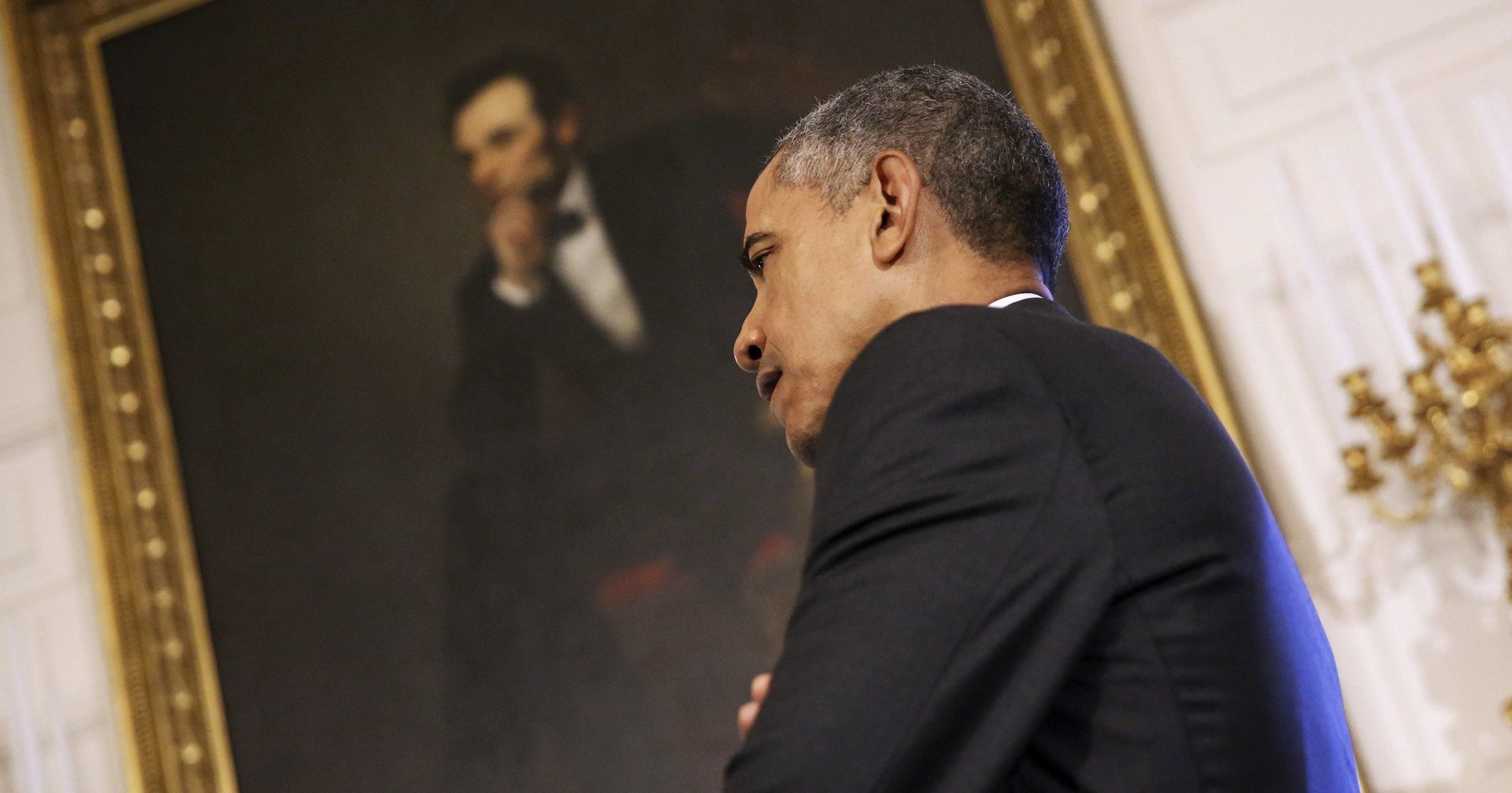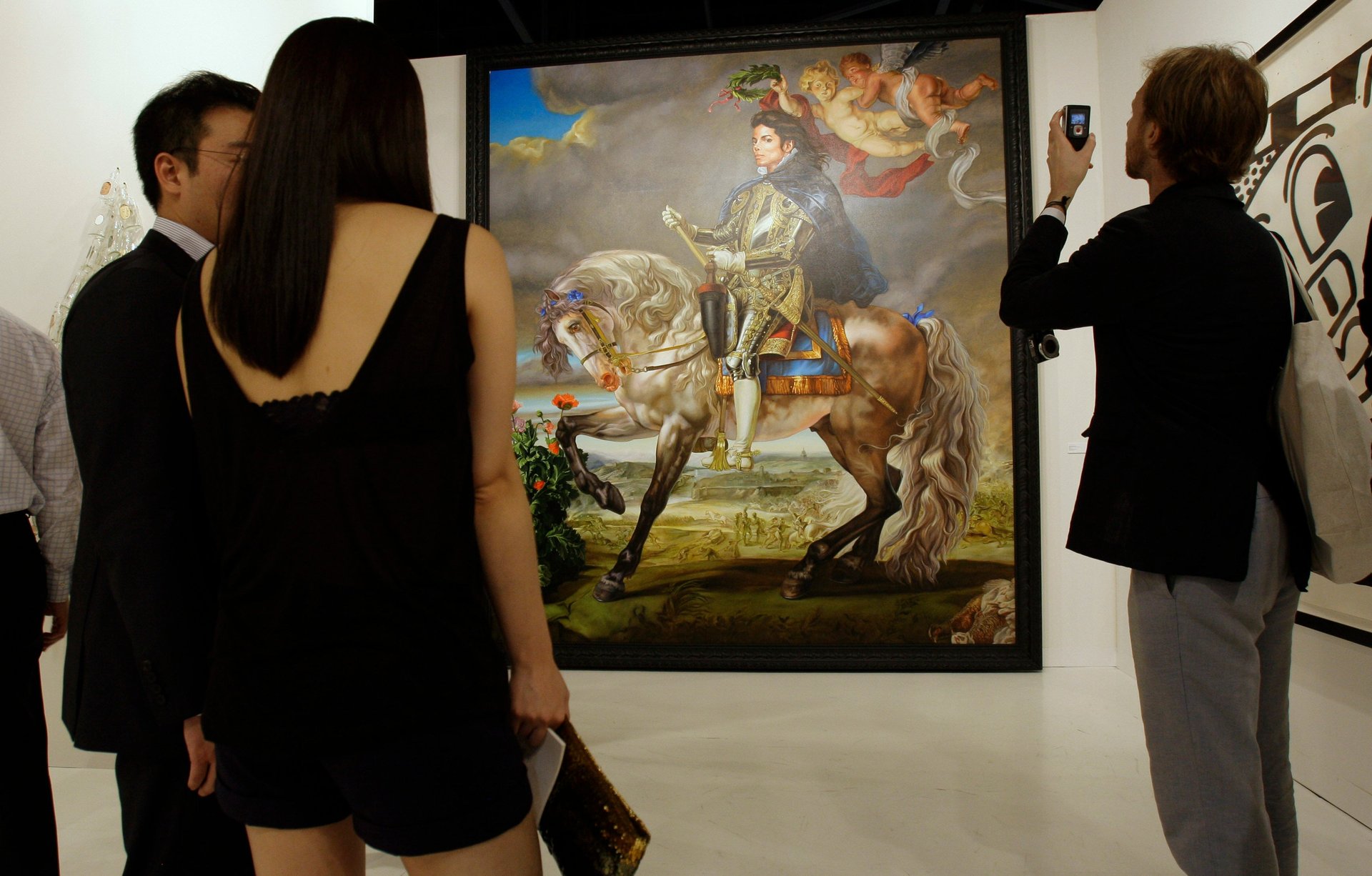Iconoclast painter Kehinde Wiley’s portrait of Barack Obama will be unveiled tomorrow
After a year working in secrecy, celebrated hip hop portraitist Kehinde Wiley is finally ready to unveil the most important commission of his career: the presidential portrait of Barack Obama.


After a year working in secrecy, celebrated hip hop portraitist Kehinde Wiley is finally ready to unveil the most important commission of his career: the presidential portrait of Barack Obama.
The Smithsonian National Portrait Gallery will present Wiley’s opus to the public in a special ceremony in Washington, DC, Monday morning (Feb. 12). The event, which will be livestreamed by the Portrait Gallery, will be attended by the former US president and first lady Michelle Obama.
Wiley, a 40-year old painter best known for his larger-than-life depictions of African American youth in regal European tableaus, has kept mum about the Obama portrait. Responding to the Guardian’s probe last November, Wiley declined to reveal details but hinted at his process.
“I’ve shot all the images—we literally shot thousands and thousands. It’s been a really fun process in which he’s been involved—but I’ve already said too much,” he teased. Wiley referred to the photographs to construct Obama’s legacy image, instead of relying on prolonged studio sittings with the busy former president.
Wiley was more effulgent when he spoke to the New York Times: “It’s going to be amazing. It’s going to be, like, boom!” he gushed.
Art insiders have been speculating how Wiley will handle Obama’s portrait—an assignment weighed by its symbolic resonance for African Americans, black artists and the traditional genre of political portraiture. Wiley’s loud color palette and extravagant allegorical compositions too will be an interesting contrast to Obama’s quiet, introspective personality. Will Wiley put Obama on a throne like he did with rapper LL Cool Jay‘? Will he be astride a white horse?
Or will the iconoclastic artist tweak his own style, so that Obama’s portrait blends in with the rest of the sedate images hanging in the “America’s President’s” gallery?
Expect an exciting twist, says art historian Robert Hobbs.
“It’s difficult to predict what Wiley will do with this portrait, but since he has placed the hip-hop alpha males he met on the streets in Harlem in the traditional poses once reserved for emperors, kings, and saints and then surrounded them with backgrounds of intense patterns from a range of cultures that often set up differences between regionalism and globalism, I would think that he would similarly deconstruct and then reconstruct established views of power in his portrait of President Obama,” explains Hobbs who co-authored Wiley’s 2012 monograph
Hobbs tells Quartz that he expects a layered image from Wiley. “Since Obama has been an outstanding proponent of change, I believe Wiley will create a contrapuntal set of circumstances that will enable viewers to witness change as one of the portrait’s main subjects,” he says. “Instead of creating portraits that are static portrayals—nouns, so to speak that entomb their subjects, Wiley’s portraits are verbs that encourage viewers to play a role in figuring out the countering symbolic systems in the portrait before them.”

Born to a Nigerian father and and an African-American mother, Wiley grew up in Los Angeles. His interest in portraiture began during frequent visits to the city’s Huntington Library art gallery. ”[I remember] looking at the powdered wigs, the pearls, and the lap dogs and all of the trappings of power—wanting in some way to master painting on that level but just being a kid and wondering what it must feel like to be able to take colored paste with a hairy stick and coax things into being,” says Wiley in a 2016 lecture at the Virginia Museum of Fine Arts.
After his MFA studies at Yale University, Wiley’s career flourished, gaining high-profile celebrity commissions including a 2010 portrait of Michael Jackson modeled after the 1632 painting of King Phillip II by Rubens.
Obama’s inspired selection of Wiley as his portraitist was an unexpected thrill to the art community. Wiley and artist Amy Sherald, who was selected to paint the first lady’s official portrait, are the first African Americans to create such a commission for the Smithsonian. African American artist Simmie Knox painted Bill and Hillary Clinton’s official White House portraits, but Nelson Shanks created Clinton’s official presidential portrait.
Before his death in 2015, Shanks claimed that he had slyly inserted a reference to Monica Lewinsky’s shadow in Clinton’s portrait, telling the Philadelphia Inquirer that he thought Clinton was “probably the most famous liar of all time.” The controversial portrait is in storage, and a portrait of Clinton by celebrated photorealist painter Chuck Close is currently on view. A spokesperson for the gallery said it took down the portrait in 2009, following their regular rotation schedule. The museum has 55 portraits of President Clinton in its collection.
The National Portrait Gallery is the only museum with a complete collection of US presidential portraits outside the White House. Obama’s new portrait will be on permanent display there starting this week.
Correction (Feb. 11): The National Portrait Gallery took down a portrait of US president Bill Clinton before its artist, Nelson Shanks, revealed that it contained a reference to Monica Lewinsky. A previous version of this story incorrectly said the portrait was taken down after the reference was revealed.